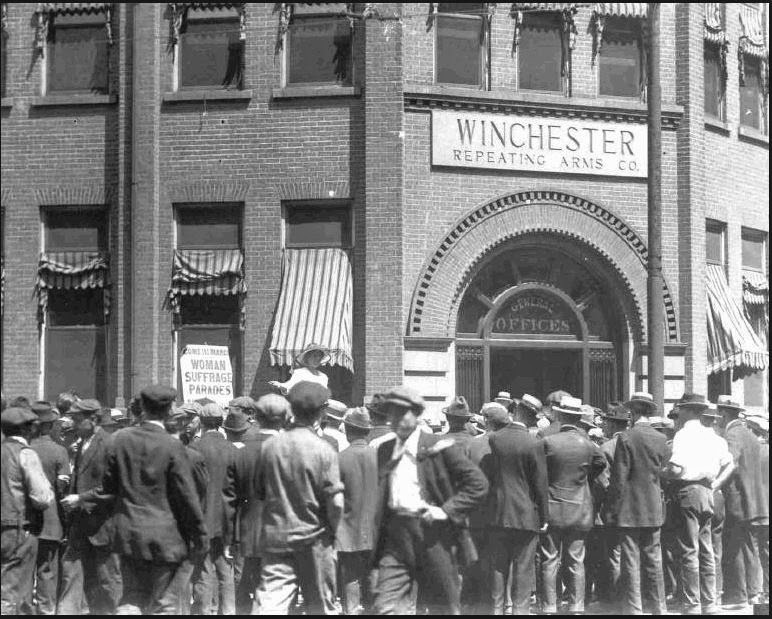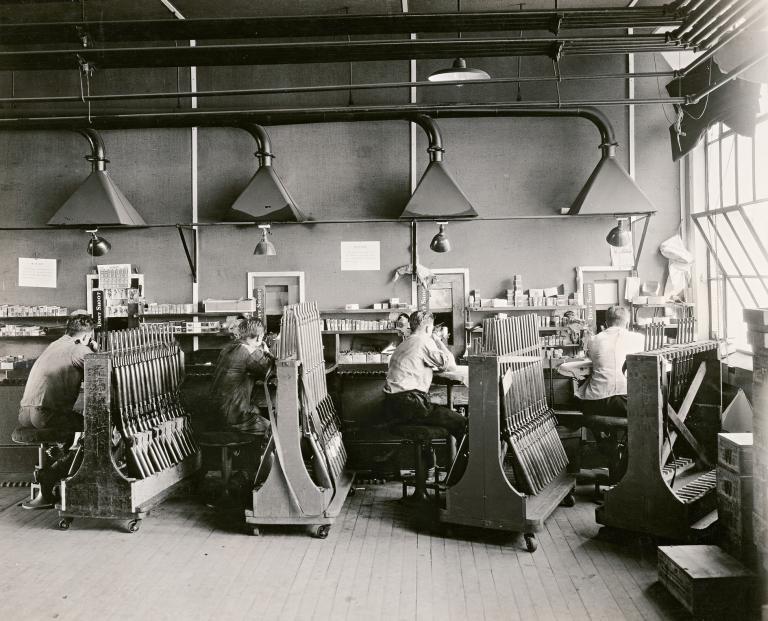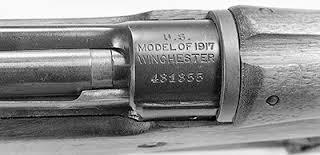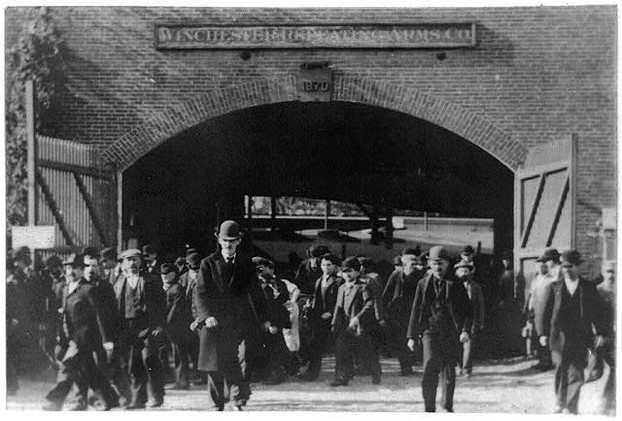5.) Colt isn't Alone: A Look Inside Winchester Repeating Arms Co. (New Haven) and Remington Munitions (Bridgeport)
Though the Colt company had an undeniable impact of industry and weapons manufacturing in Connecticut, they were not alone in the state's firearm production. Winchester Repeating Arms in New Haven, Connecticut was among the worlds leading suppliers of semi-automatic rifles, and increased manufacturing during World War I.
In Winchester Repeating Arms Company, author Herb Houze explains that production increased so much during the Great War, Winchester had single months during the war in which their expenses matched what it was over the course of an entire year prior to World War I.
Winchester Repeating Arms Company also made a conscious effort to promote safety during the Great War. Houze notes that, "the company maintaned extremely tight security and substantial guard force. As a result, there were no accidents or other events at the plant which could be attributed to enemy action" (Houze 193).
Between supplying the armed forces at war and competing with other reputable manufacturers for domestic sales of firearms, new patents for weapon technologies were being produced at an accelerated rate.
Interestingly, though, many of the primary designers of Winchester weapons were not actually employed by Winchester. Take Grant Hammond, for example, who was among the lead designers for their machine guns. According the Herb Houze in Winchester Repeating Arms Company, "Hammond's association with the Winchester company was somewhat informal since he never actually became an employee of the firm. Rather, he would submit designs to the company for their consideration, and if interest was expressed, he would work in the Experimental Department on their development" (Houze 196).
Other notable Winchester designers during World War I included Frank Burton, developer of the solid bolt self-loading rifle and Edwin Pugsley, developer ofan anti-tank rifle.
Hammond's 1917 Winchester rifle design received instant praise and was the rifle of choice for the United States armed forces. Using a dual trigger system, the weapon could be used as either an automatic or semi-automatic. Pictured to the right is an example of such a model, as shown by the Winchester 1917 engraving on the barrel. In Winchester Repeating Arms Company Herb Houze quoted several weapon critics who proclaimed, "The gun received very favorable comment. There was not an essential feature of the gun which received adverse criticism. They all thought that the general style of the gun, the balance, the trugger pull, etc., were exceedingly good" (Houze 198).
Perhaps the most astonishing impact that Winchester had on Connecticut, even greater than the nearly ten million firearms sold in their one-hundred and fifty year history, is the sheer size of the factory in terms both physical space and socioeconomic affect. The Hartford Courant's David Holahan notes, "During World War I Winchester's expanded factory boasted a whopping 73 acres of floor space and employed nearly 20,000 people — who along with their families accounted for one third of the city's population (Holahan 2016).



